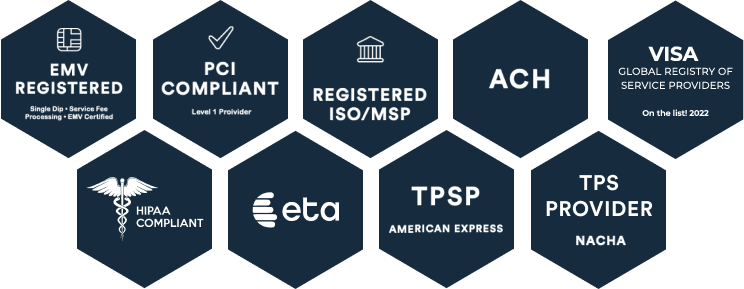New technology has touched nearly every aspect of the workforce and professional life, helping improve efficiency, productivity, and output regardless of the industry. However, not every organization is ready to make those changes. This is due to several factors, including a lack of preparation and a misunderstanding of the long-term value a solution offers.
What are the benefits and common concerns for using new technologies? Let’s take a look.
The Benefits of New Tech: Use Cases
The following are just a few applications where technology solutions offer significant benefits:
Payment Processing
Your customers want a streamlined and frictionless payment experience. You want your payment process to be painless, easy to manage, and free from errors. The best way to achieve these is by automating processes through proven digital solutions.
Digitized payment processing offers your customers a 24/7 solution for self-service processing, while you benefit from a central repository of all transactions. Automating data entry and information exchange, and maintaining a single, reliable source of truth can easily remove mountains of pressure from your accounts receivable team.
Bottom line, this creates a more transparent view of your incoming payments, while providing a better experience for your customers.
Revenue Management
Along with payment processing, digitization of your business processes can also help manage your revenue cycle as a whole, thanks to digital tools that:
- Easily track transactionflow through your organization
- Store transactional information in a secure manner
- Verify and auto-reconcile daily deposits
- Automate data entry
Order Processing
As more consumers and businesses rely on eCommerce platforms to purchase and ship their orders, this process must also become more digitized. It may involve utilizing blockchain to better track payment and products and automating internal product management in warehouses.
Implementing these technologies and strategies can:
- Reduce shipping errors.
- Increase visibility into the supply chain.
- Identify more reliable shipping routes/providers for products.
Customer Engagement
If your organization can’t properly engage with your clients, you increase the chances of customers feeling frustrated and seeking another service. If you don’t use modern digital solutions to instill engagement strategies into the overall experience, you’re missing out on critical customer retention opportunities.
In practice, digital solutions can make it easier for consumers to interact with your organization, like using chatbots or using more push notifications on browsers and apps. These solutions can also automate outreach, making it easier to send texts or emails to remind consumers of purchases or upcoming appointments.

Common Fears of Adopting New Technology
Technology can quickly improve just about any business process. Unfortunately, many decision-makers are slow to adopt these better practices. Why? Mainly because they’ve done business a particular way for decades, so why change now?
Here are some common challenges teams run into when adopting new technologies (and how you can change those perceptions).
1. They Don’t Know How to Start
For many companies, a digital overhaul can simply seem overwhelming. They recognize the benefits but are so paralyzed by the amount of work they assume is required that they don’t know how to begin.
The Solution
If you want to make your digital transformation a bit less daunting, there are two strategies you should employ.
- Establish your business strategy: Before you invest in any digital solution, you must first establish your business strategy and identify specific ways digital integration can assist you in those goals. Whether that’s an industry-specific, comprehensive solution, or a unique combination of specialized tools, shopping for solutions carefully and choosing ones with the right integrations are both strategies that are key to making digitization effective. To properly develop this strategy, you may want to consider collaborating with a digital transformation service provider.
- Work with an onboarding process: Even if you know which technologies you should use, that doesn’t mean you or your employees will know how to use them to their full potential, at least at first. Computer and technology literacy levels vary across a number of demographic factors, so it’s not usually wise to assume your team will just “pick it up on their own.” Don’t be afraid to help things along. Make use of the solution’s available onboarding resources, and conduct training sessions on your new digital processes as needed to help employees gain familiarity with the tool and improve adoption rates.
2. Their Employees Are Resistant to Change
Even the most flexible of employees can be thrown off by new processes. This may make them less eager to try new ideas or outright refuse to change their ways.
The Solution
If you find yourself with low adoption rates due to a reluctant workforce, it’s not necessarily because they’re unmotivated. It may be possible that their resistance comes from a communication misstep on your part. There are ways to change that.
- Clarify long-term benefits: Address the specific pain points you wish to alleviate by switching to these new digital solutions. For example, maybe your chosen technology can reduce your employees’ time on a given task, or eliminate steps they find tedious and annoying. If you can effectively and honestly communicate long-term benefits, you can often leverage the frustrations they themselves want to resolve, resulting in more willingness to make the switch.
- Listen to your employees: Your employees know best when it comes to what helps them complete their tasks. When developing your strategy, consider asking them what kinds of changes they hope to see. And if you’ve implemented a technology with which they persistently have a negative experience, it may be worth dropping the service and looking for an alternative tech solution that better meets their needs.
3. They’re Afraid of Failure
There’s a steep learning curve with any new integration, however simple and user-friendly the technology is. This learning curve can scare off decision-makers and team members alike, making them think the small failures can outweigh the cost savings of the technology.
The Solution
Temporary failure is nothing to be afraid of, but some people may need extra encouragement. It’s possible to overcome those initial failures with a good strategy.
- Establish a sense of understanding: Despite being excellent opportunities to learn and improve, errors and mistakes often carry negative connotations, both for management, and for team members. Executives see errors effectively as an additional expense, and when expenses outweigh the profits, they try to dispose of the problem element. Similarly, team members fear frequent errors as experience has taught them they lead to negative performance reviews. Because of these connotations, many in the organization may be fearful to even try the new tech. The key here is demonstrating the value inherent in mistakes: they give clear feedback on ineffective tactics. In other words, they can be used to guide us toward successful strategies. When the whole team sees failures as a chance to learn faster, they’ll be less afraid of occasional setbacks.
- Train for proper skills: Don’t just rely on trial and error—give your employees proper training (like in the onboarding we mentioned earlier) to ensure they are equipped with the right skills to effectively handle your new solution. Helping them achieve small, early successes emboldened them to pursue larger, longer-term ones.
Transform Your Organization
Digital implementation into your workflow is essential, but it’s hard to do it all on your own. That’s why having an experienced partner like CORE can help you get started. Contact us to learn how our payment and engagement solutions can transform your business.






